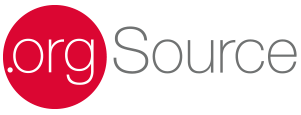The Silent Killer of Innovation? Your Org Chart.

You’ve invested in new systems. You’ve reworked your member experience. Maybe you’ve even dipped a toe into AI. But nothing’s changing. Your teams are still slow to act, data is hard to find, and no one seems to own the full picture. The real barrier might not be your tools or your people—it’s the structure itself. Until you start breaking down silos, innovation will always hit a wall.
What if the real problem isn’t the technology or even the culture?
What if it’s your org chart?
Your Structure Was Built for a Different Era
Most association org charts were built decades ago—for a slower world.
A world where:
- Each department had one job
- Data lived in silos (if it lived anywhere)
- Speed wasn’t survival
- IT, marketing, learning, and membership didn’t have to collaborate daily
But that world doesn’t exist anymore.
Today’s members don’t care who “owns” the content. They want what’s relevant, fast, and easy to access—across platforms, formats, and touchpoints. If your teams aren’t working horizontally, your experience won’t feel seamless—because it’s not.
What Breaking Down Silos Could Unlock for Your Association
If your teams still operate in silos, here’s what you’re losing:
🔸 Missed opportunities
Marketing builds a killer campaign—but learning doesn’t supply content fast enough. Or IT launches a new tool—but no one trains staff to use it.
🔸 Inconsistent experiences
Your AMS knows what members attended, but your LMS doesn’t talk to it. The result? Repetitive emails, generic offers, and disengaged members.
🔸 Confusion and burnout
Staffers spend more time clarifying who owns what than doing the work. Or worse—great ideas die in the handoff between departments.
These aren’t edge cases. They’re happening every day, in associations of all sizes.
This Isn’t a Tech Problem. It’s a Structural One.
You can’t fix this with more tools. You fix it with alignment. That means rethinking how your people, teams, and processes are connected. It might feel uncomfortable—but small shifts in structure can unlock big wins in speed, collaboration, and member value.
Here’s where to start.
5 Practical Ways to Start Breaking Down Silos
You don’t need to blow up your org chart. Start here:
✅ 1. Build “Horizontal” Teams for Key Initiatives
Instead of assigning projects by department, assign by outcome:
- Launching a new member journey?
Bring together marketing + learning + tech + membership.
- Redesigning your onboarding?
Include people who understand the first 90 days from all angles.
Tip: Rotate leadership across departments. Give everyone skin in the game.
✅ 2. Create Shared KPIs
If your departments have competing metrics, you’ll never achieve shared goals.
Try setting at least one KPI that spans teams, like:
- “Increase cross-sell rate between events and courses by 20%”
- “Boost member engagement score by 15%” (across email, logins, and resource downloads)
Tip: Review shared KPIs monthly as a leadership team. If it’s everyone’s goal, it gets done.
✅ 3. Flatten Decision-Making
How many layers does it take to greenlight a pilot?
If your innovation process requires three sign-offs and a six-month wait, it’s not innovation—it’s delay.
Tip: Create “fast-track zones” for small experiments—where staff can test ideas under a budget threshold without full exec approval.
✅ 4. Encourage Cross-Training and Job Shadowing
Your marketing team should know what happens inside the LMS. Your learning staff should understand the CRM.
Why? Because empathy + insight = better solutions.
Tip: Create short “walk a mile” weeks—staff swap departments for a few hours or days to understand each other’s tools, workflows, and challenges.
✅ 5. Map the Drop Zones
You already know where the baton gets dropped.
Make it visual.
Try this exercise in your next leadership meeting:
- Draw a simple process map: from member outreach → signup → onboarding → retention
- At each step, ask: “Where do we lose momentum?”
- Then ask: “Who’s involved here but not in the room?”
Tip: Don’t assign blame. Assign ownership.
If You Want Innovation, Design for It
You can’t just hope teams will work better together. You have to design for collaboration.
That starts with structure—not just strategy.
If your org chart reinforces silos, your operations will reflect it. So will your member experience.
Innovation thrives where:
- Teams have shared goals
- Information flows freely
- Staff feel empowered to move
If that’s not your reality yet, it’s not a failure—it’s a signal.
→ Ready to align your teams around outcomes, not org chart lines?
Let’s talk about how .orgSource can help you shift from structure confusion to strategic collaboration—without breaking everything.
